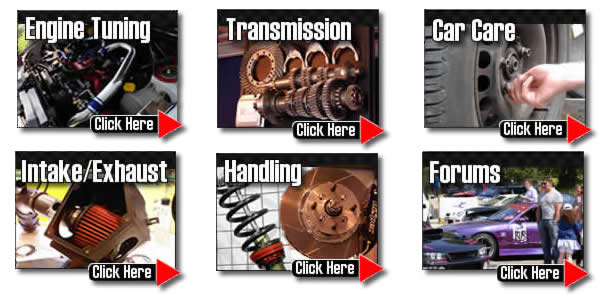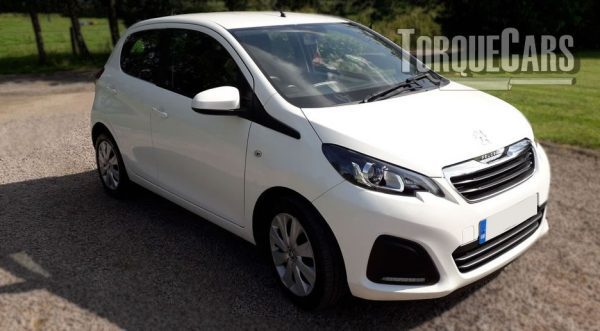Peugeot 108 Tuning
"Thank you for reading this Peugeot 108 tuning guide."
Replacing the very popular 107 the 108 was launched in 2014. There were 2 engine options and both felt quite lively in this small light chassis.
It shared much with the Toyota Aygo and Citroen C1
- 1.0 L 1KR-FE I3 (KGB40) 68bhp 93 N⋅m (69 lbf⋅ft) at 3,600 rpm
- 1.2 L EB2DT I3 (PAB40) 82bhp 130 N⋅m (96 lbf⋅ft) at 1,750 rpm
It handles quite well, and feels nippy but there are some significant improvements to be had as the 108 was produced to a budget.
The 108 is a good car tuning project to play with. Take your time and research 108 tuning to spare yourself making the usual common mistakes we often hear about.

Handling/Suspension upgrades
Many 108 owners uprate the handling of their cars with tuning suspension modifications as a priority, this will certainly increase your enjoyment of the car.
Good suspension tweaks that dramatically improve handling for the 108 include a couple of degrees negative camber and 1-1.5 degrees of toe out on the front wheels.
We would go to a maximum drop of 30mm -45mm on most models. You risk handling compromises if you go lower than this.
Engine tuning mods.
This list of the stages and uprated mods are usually fitted by our members, decide how far you want to go before you get started.
Don't just look at the peak power figures, you need to see the whole torque curve when determining if a mod is right for you 108.
Smaller engines do not generally provide much of a return in terms of power so start with a bigger engine, but the light chassis means every single BHP you gain is noticed when driving it.
Engine swaps can be a good option if you have a small engine size and we have seen some 1.6 and 1.8 turbo engines dropped into the 108 with great effect. Look to the 208 range for suitable donors but be prepared for a lot of work to drop these in and you'll need to do a gearbox upgrade as well.
Getting the correct grade of uprated parts for your planned usage of the car is vital. Stage 3 motor sport parts just won't work well on the road difficult in stop start traffic.
Please watch our introduction Video tutorial to car tuning. Be sure to subscribe and support our new channel.
How to tune your car
- Improve the handling
Focus on Suspension improvements, such as coilovers and make sure the bushings are in good order and that the alignment is correct. Then focus on improving the brakes, with a big disk brake conversion kit and fast road brake pads.
- Remove restrictions
Focus on the intake and exhaust with filters being the common point of restriction in a tuned car. Intercoolers may also become restrictive on turbo engines so this may also need to be uprated.
- Burn more fuel & air
Increase the fuelling so it matches the air coming into the engine. The ratio is important so you need to improve the fuel pump and injectors, so the head mods, big valve conversions, fast road camshafts and forced induction upgrades extra supply of air is adequately met.
- Test and replace any weak parts
Weak areas are commonly the clutch, the turbocharger and pistons and crankshaft in a highly tuned engine. Makes sure these components will cope with your power aspirations.
- The Tune or Remap
A cars ECU controls the fuel, timing, spark and even the turbo in some cases, so to fully extract your gains you should remap the car last and this will fully release the power. Some cars are easy to map, and others require piggyback ECU's or aftermarket ECU's but this is the most vital step of your tuning project.
Modifying to Stage 1:
Remap, Panel air filter, Suspension upgrade (drop 30-45mm), Alloy wheels, Lighter flywheel, Sports exhaust.
Modifying to Stage 2:
fuel pump upgrades, Power/Sport clutch, high flow fuel injector, Fast road cam, Ported and polished head.
Modifying to Stage 3:
Adding or upgrading forced induction (turbo/supercharger), Competition cam, Internal engine upgrades (pistons/head/valves), Sports gearbox, Engine balancing.
 Peak power is good on competition cars but for a drivable and fun car you need a long torque band and perhaps extending the rev range.
Peak power is good on competition cars but for a drivable and fun car you need a long torque band and perhaps extending the rev range.
The whole point of our guides is to give a little insight into the world of modifying performance parts and point you in the right direction, our forum is where you can ask for more detailed advice and tips on your customized car project, the best performance parts and all aspects of modding cars.A fast road camshaft usually works out as one of the best NASP power modifications you can do from a single upgrade to your engine.
It maximises the intake and exhaust durations and pushes up the power if done right. Ideally you'd add other mods and finish up with a reflashed ECU. We'd also caution you not to go with a motor sport cam as this affects the engines idling and general town driving characteristics.
When pushing up the power you will need to increase to the fuelling. More power needs more fuel.
Using higher octane petrol is another option if you find you are suffering from detonation or premature ignition on your Peugeot project after fitting other parts. Upgraded injectors will enable you to supply sufficient fuel to the engine.
A fuel pump will only deliver a finite amount of fuel, so you may need to uprate this if your injectors are demanding more fuel.
Intake and Exhaust Tuning.
Now we move on to the intake and exhaust and ensure proper flow through the engine. Induction kits only help to boost performance if your air intake is struggling! Adding an induction kit to most low power engines will see LITTLE LOW END POWER GAIN AT ALL. If you have heavily modified your engine and it's need for air INCREASES DRAMATICALLY then an induction kit is the answer and will help remove this restriction.
Maximum power gains come from a full induction kit with a cold air feed on heavily tuned engines, this can be sited within an air box but a performance panel filter should suffice for most applications. TorqueCars suggest you use a panel air filter as these are easy to clean and maintain and generally perform better than paper ones.
Sports exhausts equal out the flow of air through the engine. But if your exhaust pipe is too big, ie: it's over 1.8 inches bore, you will lose much of your flow rate and end up lacking power and torque.
gas flowing the head will allow you to maximise your air/fuel charge. Leave this to a professional though with a proper flow bench and machine tools A good fast road power clutch will help to keep that power going where it should. Never cut corners or expect the standard clutch to cope. The best mods we recommend for your 108 are Remapping or piggy back ecu, fast road cam and air intake and exhaust
Find a supercharger kit and the fun really starts, the nice steady boost and rpm characteristics of the supercharger make them easier to map. Adding forced induction will generally require a lower compression ratio or water injection and is a lot of work, but well worth the effort and cost.
Alloy wheel upgrades.
The benefits of alloy wheels include reducing your unsprung weight and better brake cooling via the extra air flow they allow. Don't forget that your choice of rubber greatly affects your cars grip and handling. It is not worth compromising performance with cheap tyres when you can buy soft compound performance tires.
Large 108 alloy wheels can decrease performance. If you get big alloy wheels you will be changing your final drive ratio and create a host of issues.
For example if you decided to fit some 15's you would need to fit wheel spacers of around 10mm and obviously longer wheel nuts on the front wheels to maintain the turning circle and prevent fouling on the bodywork whilst turning.
At the rear there are some issues, the petrol tank filler pipe is prone to rub on wider wheels.
We would recommend you relocate this pipe and fix it out of the way. The second issue with the rears is that by using spacers will push the wheels into the bodywork, so you can't use spacers.
Due to this we would advise sticking to a maximum wheel size of 16 inches, although we know some of our members have installed larger rims with no problems.
For more information on Tuning your car please join us in our friendly forum where you can discuss 108 options in more detail with our 108 owners. It would also be worth reading our unbiased Peugeot tuning articles to get a full grasp of the benefits and drawbacks of each modification.
Please help us improve these tips by sending us your feedback in the comments box below. We love to hear what our visitors have got up to and which mods work best for them on each model of car. Comments are used to improve the accuracy of these articles which are continually updated.
If you liked this page please share it with your friends, drop a link to it in your favourite forum or use the bookmarking options to save it to your social media profile.
Check out TorqueCars new YouTube channel, and see their awesome new content...
Feedback
Please use our forums if you wish to ask a tuning question, and please note we do not sell parts or services, we are just an online magazine.
Help us improve, leave a suggestion or tip
